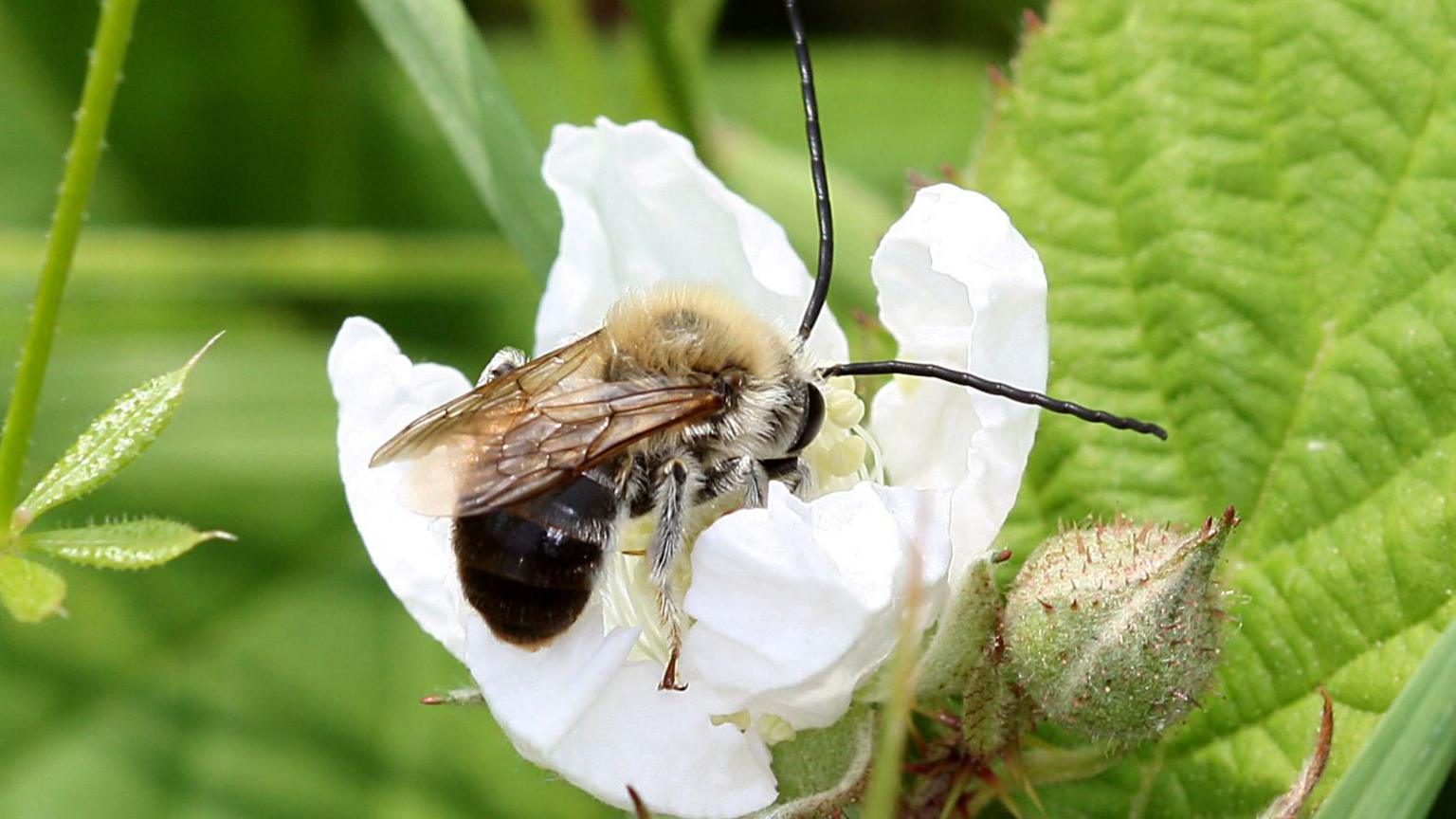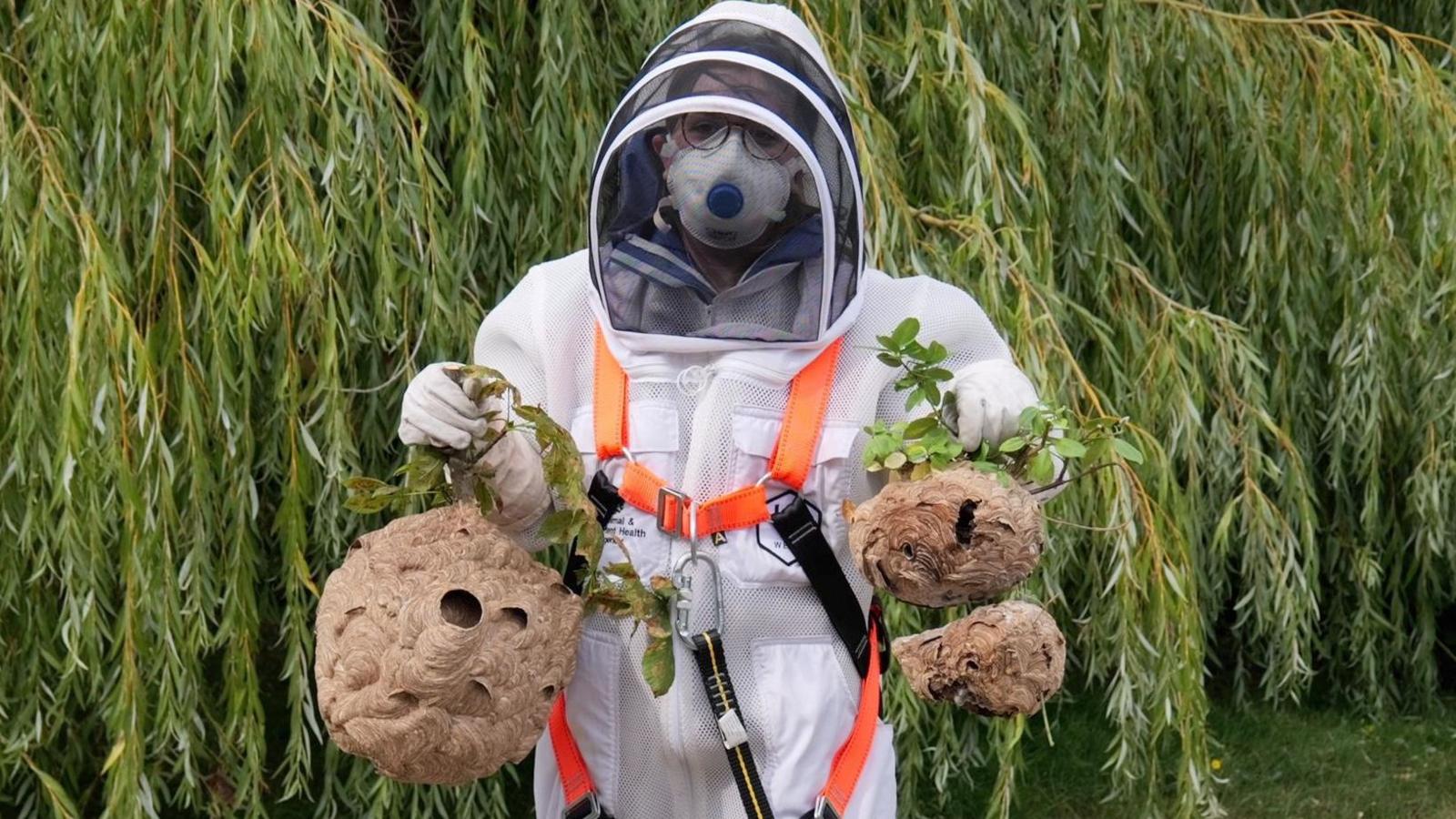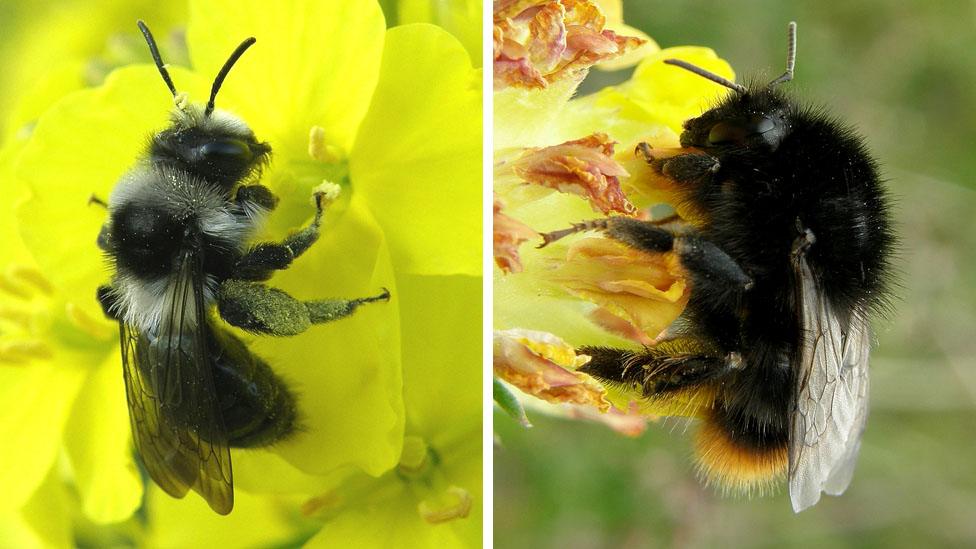Bee species get lifeline through habitat project

Natural England said the four species had suffered severe population declines due to habitat loss across England
- Published
Four threatened bee species will benefit from new coastal habitats created by volunteers and conservationists in East Sussex.
The project, in Hastings and St Leonards, has established wildflower meadows, hedgerows and specialised nesting sites to support several species, including the tormentil mining bee and long-horned bee.
Natural England said the species have suffered severe population declines due to habitat loss across England.
Lorraine Boast Millar, from Natural England, said a "bee corridor' had been created along the East Sussex coastline by the organisation working with working Groundwork South, Hastings Borough Council, ecologists, and 185 volunteers.
She added: "The initiative includes new wildflower meadows, restored woodland edges, enhanced hedgerows and urban habitat improvements in community spaces and allotments."
Natural England said the project demonstrated the impact of government investment in species recovery, with the project forming part of Natural England's £13m Species Recovery Programme Capital Grants Scheme.
It said the grant had funded 63 conservation projects in England between August 2023 and March 2025, directly targeting the most threatened wildlife.
A spokesperson added: "The initiative demonstrates how community involvement can deliver conservation outcomes for England's most vulnerable wildlife.
"Comprehensive bee surveys will monitor the success of habitat enhancements and track population recovery of the target species."
Follow BBC Sussex on Facebook, external, on X, external, and on Instagram, external. Send your story ideas to southeasttoday@bbc.co.uk, external or WhatsApp us on 08081 002250.
Related topics
- Published9 August

- Published26 March 2019
